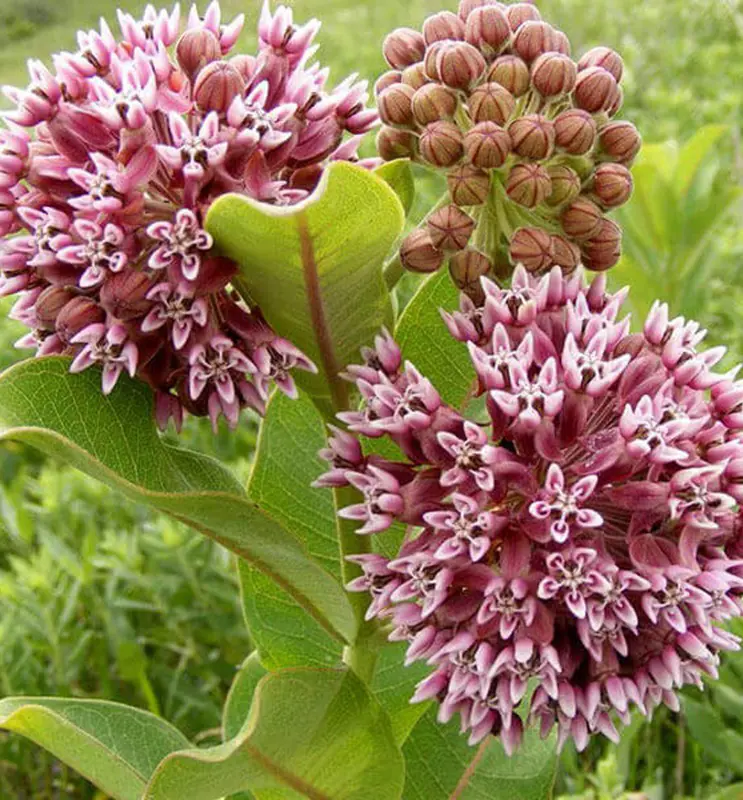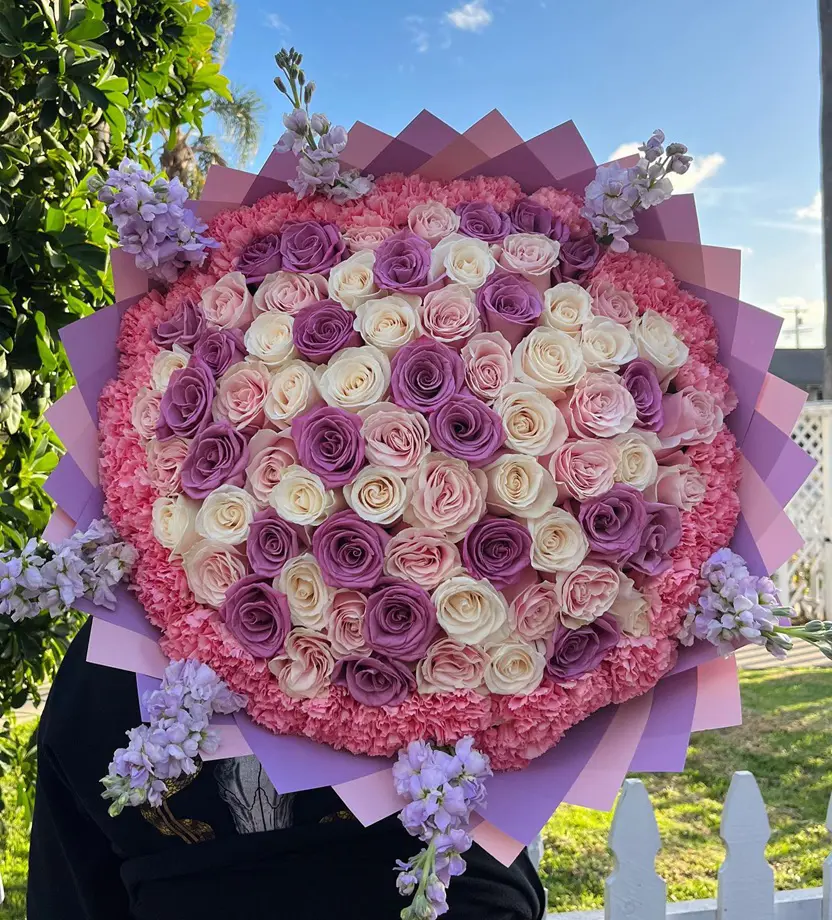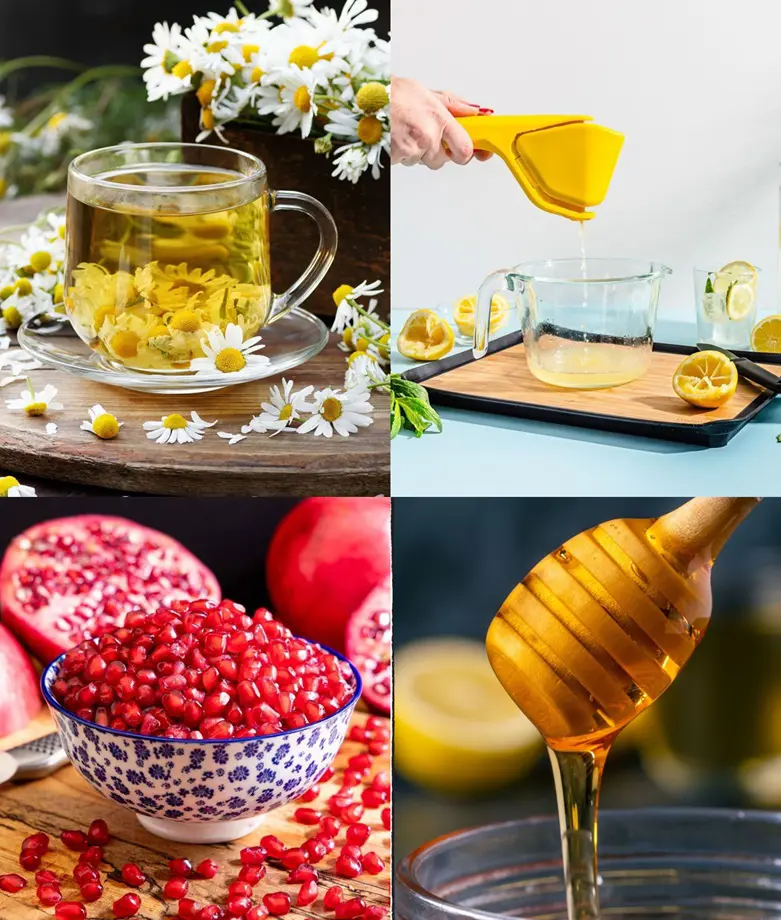Best Air Purifying Plants
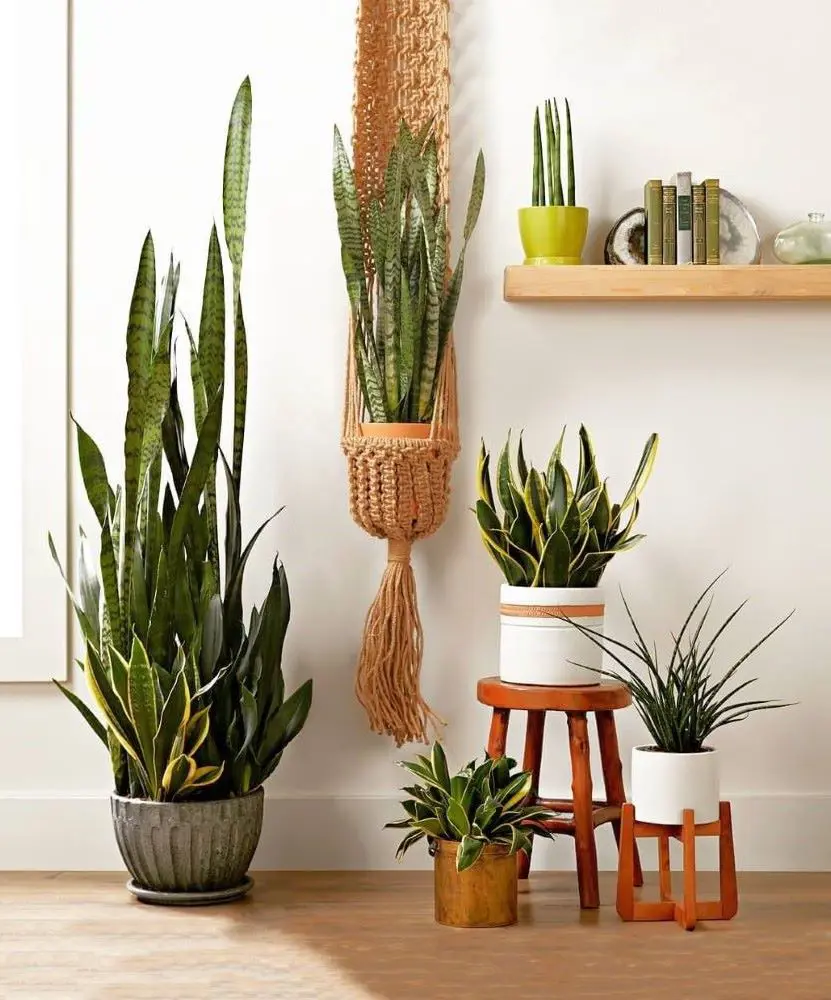
This post may contain affiliate links. If you make a purchase through links on our site, we may earn a commission.
Many plants come with environmental and psychological benefits like providing fresh air and relaxing the mood. Indoor plant varieties like Aloe Vera and Weeping Fig are known for their air-purifying qualities.
As per a NASA study, certain common indoor plants can naturally remove harmful substances like benzene, formaldehyde, and trichloroethylene from the air.
1. Peace Lily
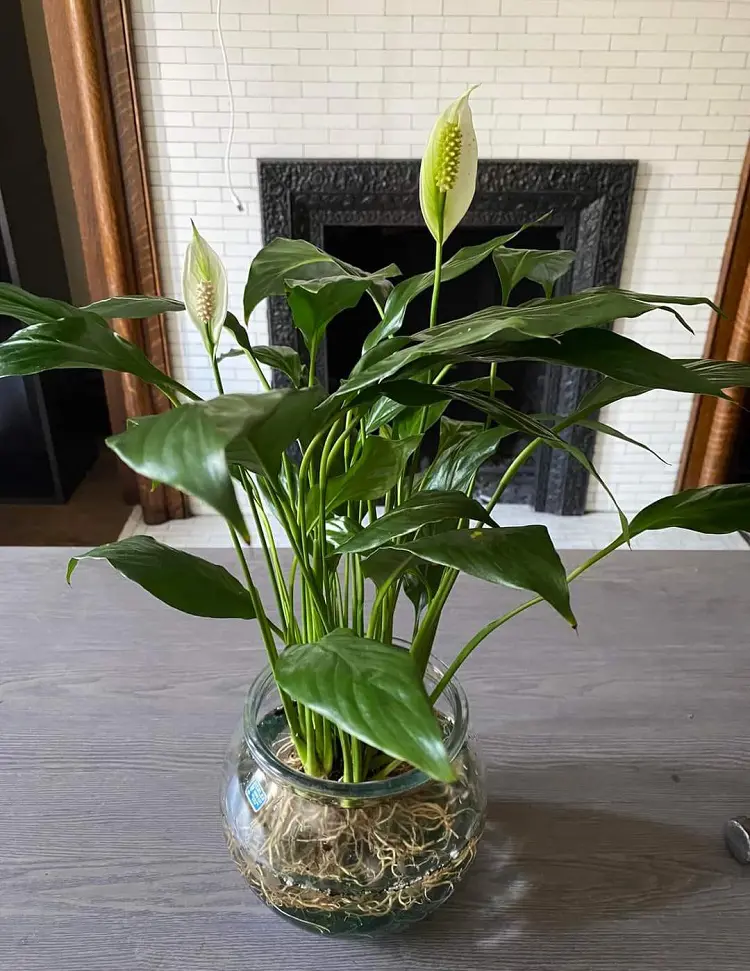
The Peace Lily is a popular low-light indoor plant known for purifying air. However, it's important to note that it can be harmful to cats and dogs if ingested. To care for it, place the plant in bright, indirect light and keep the soil consistently moist, but not waterlogged.
Although Peace Lilies can tolerate brief periods of dry soil, neglecting them for too long may cause their leaves to turn brown. If you have pets, ensure the plant is in a location inaccessible to them to prevent any potential harm.
- Name: Peace Lily (Spathiphyllum)
- Light: Medium to low indirect light
- Water: Keep soil consistently moist; water when the top inch of soil feels dry
- Mature size: Up to 24 inches tall
2. Aloe Vera
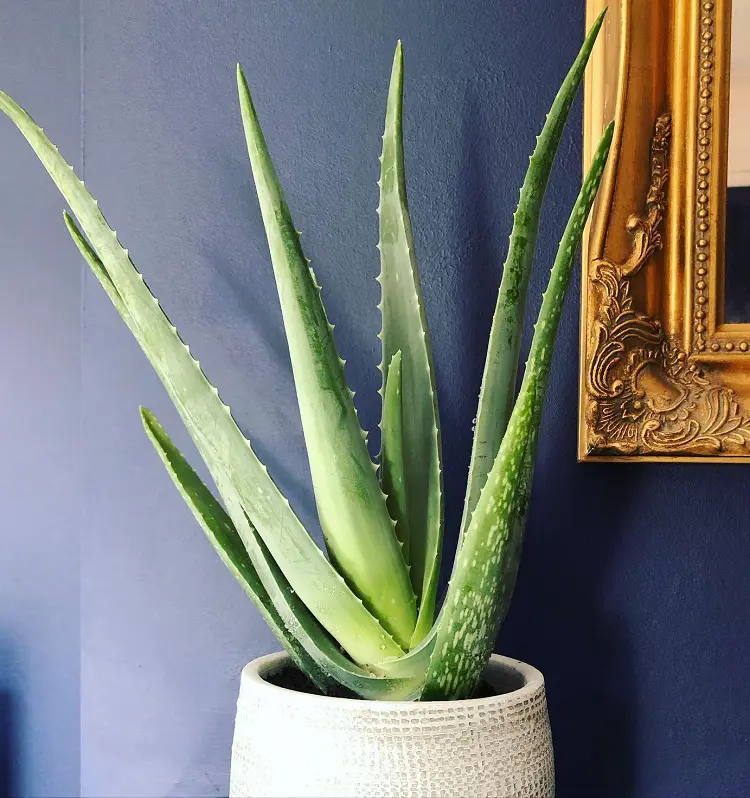
Aloe Vera, a healing succulent, thrives in sunny kitchen windows and serves as a natural remedy for burns. Beyond its medicinal properties, it acts as an air purifier, targeting formaldehyde and benzene commonly found in varnishes, floor finishes, and detergents.
Despite its benefits, it poses a threat to pets, as it is toxic to both cats and dogs, and its sharp thorny leaves can be hazardous. When caring for Aloe Vera, place it strategically to ensure it receives sunlight. Keep it out of reach of pets to prevent any accidental ingestion or injury.
- Name: Aloe Vera (Aloe barbadensis miller)
- Light: Bright, indirect light
- Water: Allow soil to dry out between watering; water sparingly
- Mature size: Up to 24 inches tall
3. Weeping Fig
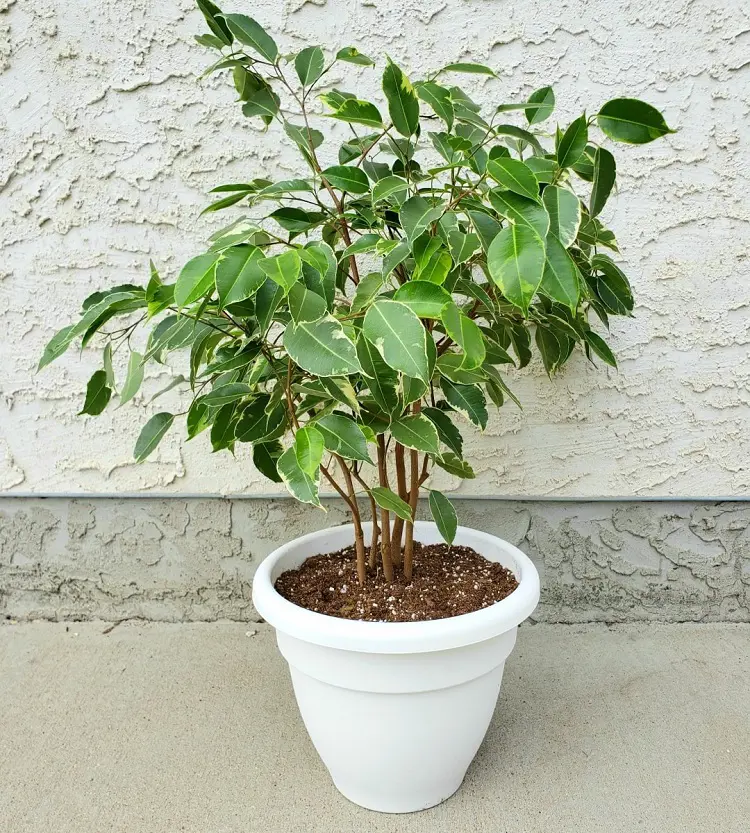
The Weeping Fig is an excellent air purifier that targets chemicals from adhesives, nail polishes, glues, and stain removers. It boasts long, glossy leaves, making it an attractive houseplant suitable for both indoor and outdoor growth.
However, it's crucial to be cautious with pets around as the plant can be harmful to animals. To ensure the safety of your furry friends, keep the Weeping Fig out of their reach. This way, you can enjoy the plant's air-purifying benefits without posing any risk to your pets.
- Name: Weeping Fig (Ficus benjamina)
- Light: Bright, indirect light to partial shade
- Water: Keep soil consistently moist, but not soggy
- Mature size: Can reach up to 6 feet tall
4. Boston Fern
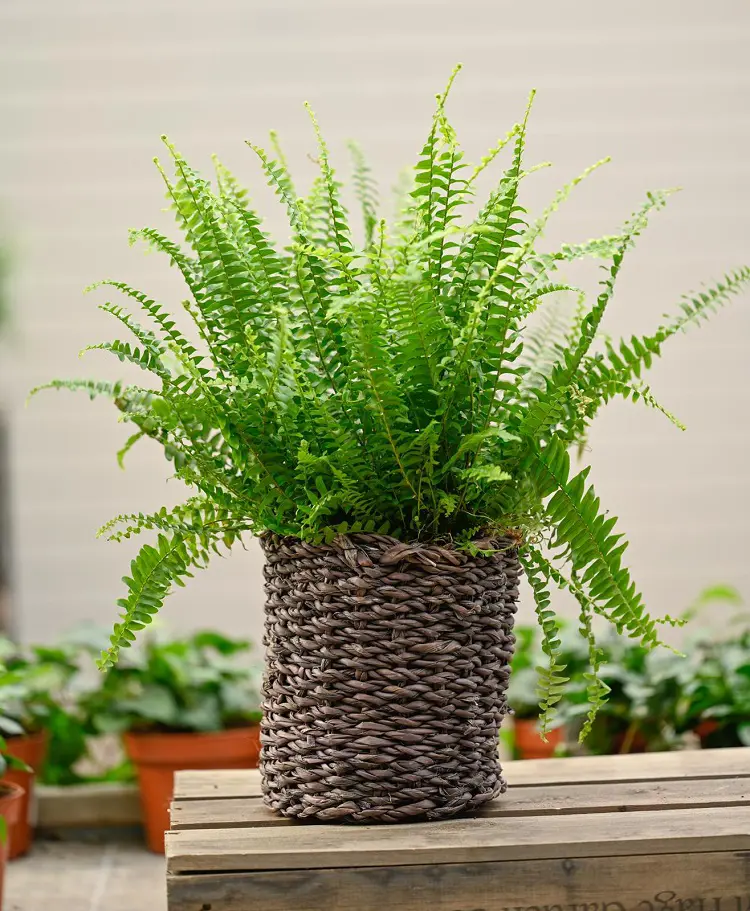
Boston Ferns, known for their low maintenance, excel at purifying air by removing pollutants like formaldehyde and benzene, according to NASA studies. Their graceful, flowing leaves make them perfect for hanging, adding a vibrant touch of green to any room.
To keep them happy, mist the fern a few times weekly or place it in a bathroom as they love humidity. With these simple care tips, you can enjoy a beautiful and air-purifying Boston Fern in your home, enhancing the atmosphere while keeping maintenance hassle-free.
- Name: Boston Fern (Nephrolepis exaltata)
- Light: Bright, indirect light
- Water: Keep soil consistently moist
- Mature size: Can reach up to 3 feet in height
5. Spider Plant

The hardy Spider Plant is an ideal choice for plant beginners. It actively combats toxins like carbon monoxide and xylene from the printing and rubber industries. Importantly, it's safe for pets, making it a pet-friendly houseplant.
This low-maintenance plant not only helps clean your indoor air but also offers the convenience of minimal care. So, if you're new to houseplants or want a green companion, the Spider Plant is a resilient choice that practically takes care of itself and you.
- Name: Spider Plant (Chlorophytum comosum)
- Light: Medium to bright indirect light
- Water: Water when the top inch of soil feels dry
- Mature size: Up to 24 inches long
6. Dracaena
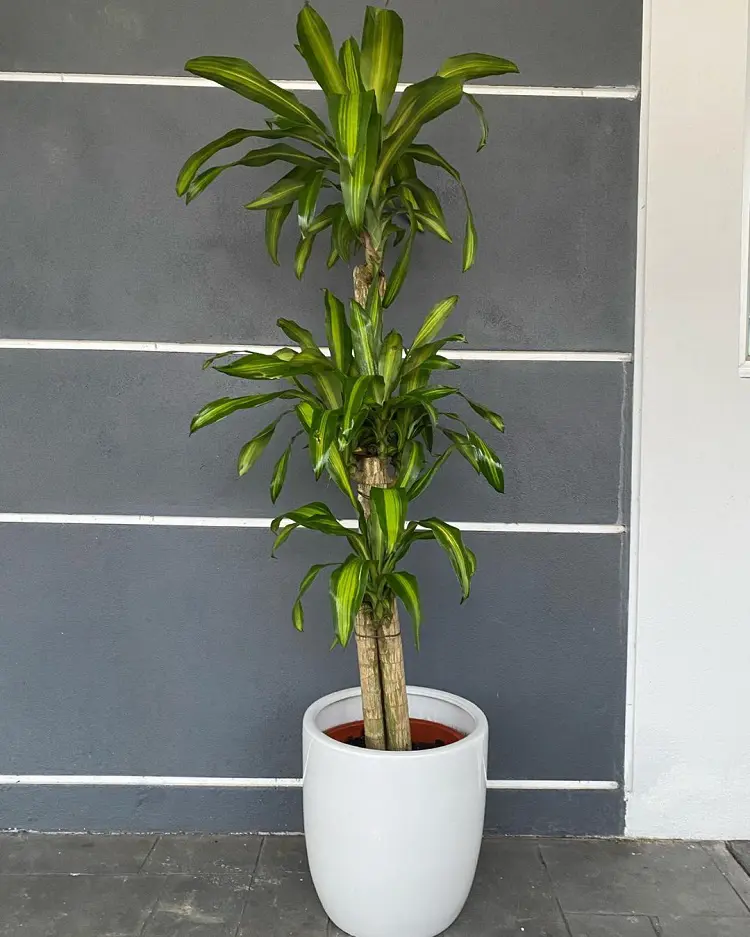
Dragon trees, part of the Dracaena family, are top-notch at cleaning the air by getting rid of stuff like benzene and formaldehyde. They're tough and make great indoor plants. But, they don't like too much water, so let the soil dry a bit before watering.
These plants are not safe for pets, so it's best to choose a different plant if you have furry friends around. In summary, dragon trees are awesome for fresh air, but keep them away from your pets!
- Name: Dracaena (Dracaena spp.)
- Light: Medium to bright indirect light
- Water: Allow the top inch of soil to dry before watering
- Mature size: Varies by species, but can range from a few feet to over 10 feet
7. Bamboo Palm
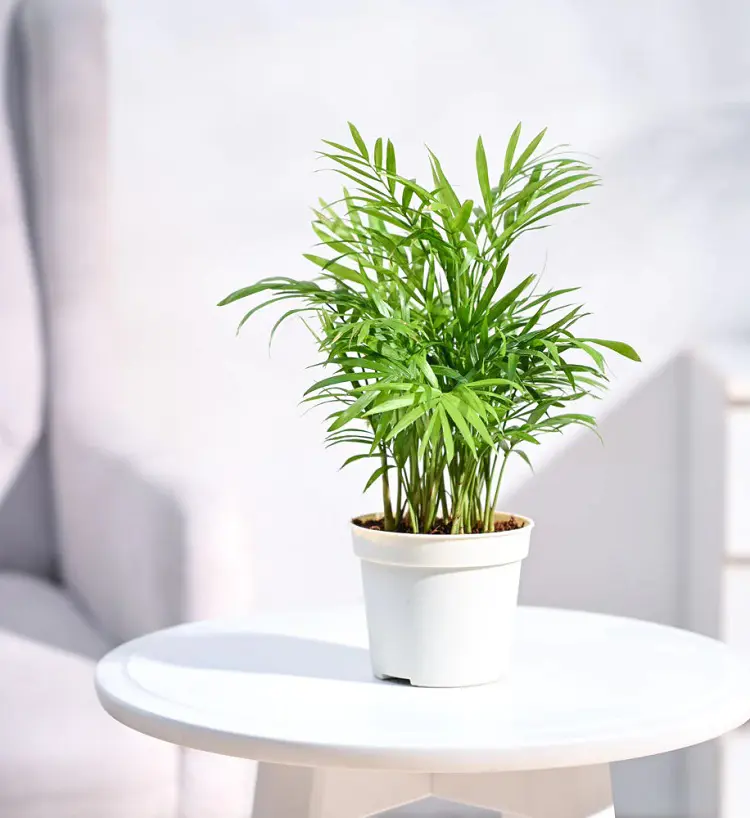
The Bamboo Palm, specifically the chamaedorea seifrizii type, is a great choice for keeping your indoor air clean. There are many types of Bamboo Palms to pick from, but this one is quite popular.
These tall indoor plants are easy to take care of, making them perfect for people who are new to having plants. They don't like too much sunlight, so keep them away from direct sun. Also, be careful not to give them too much water; just 1-3 times a week is plenty.
- Name: Bamboo Palm (Chamaedorea seifrizii)
- Light: Filtered light to partial shade
- Water: Keep soil consistently moist
- Mature size: Can reach up to 7 feet tall
8. Chrysanthemum
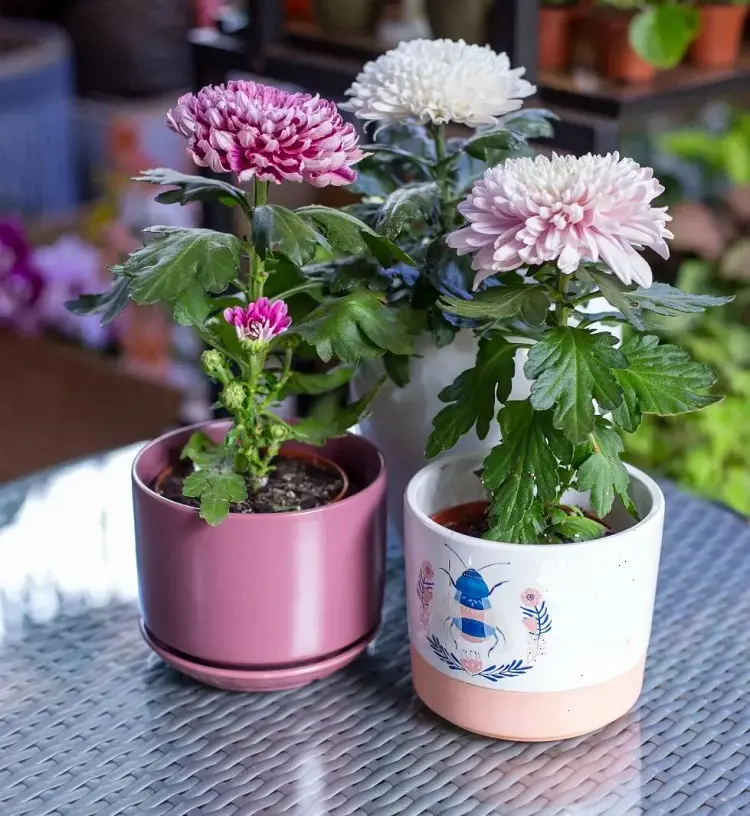
Chrysanthemums, also called 'Mums,' bring vibrant colors to your home with options like yellow, pink, red, and white. Beyond their beauty, they're fantastic for cleaning the air, especially from paint and glue chemicals.
To keep them blooming, put them in a bright room with lots of direct sunlight. However, if you have pets, it's crucial to know that these pot mums are not friendly to animals.
- Name: Chrysanthemum (Chrysanthemum morifolium)
- Light: Bright, indirect light
- Water: Keep soil consistently moist
- Mature size: Varies by variety, generally 1 to 3 feet tall
9. English Ivy

English Ivy is a top-notch air-purifying plant, proven by NASA. It's great at getting rid of harmful stuff like formaldehyde and benzene, and some studies even say it reduces mold in the air.
These indoor plants are suitable for every room and need bright but not direct sunlight, love humidity, and prefer cooler temperatures. Be cautious, though; English ivies can grow fast and become invasive. Sadly, they're not safe for pets due to toxins in the leaves and berries, so be careful if you have animals.
- Name: English Ivy (Hedera helix)
- Light: Medium to bright indirect light
- Water: Keep soil consistently moist
- Mature size: Can spread and trail, with heights ranging from a few inches to several feet
10. Snake Plant
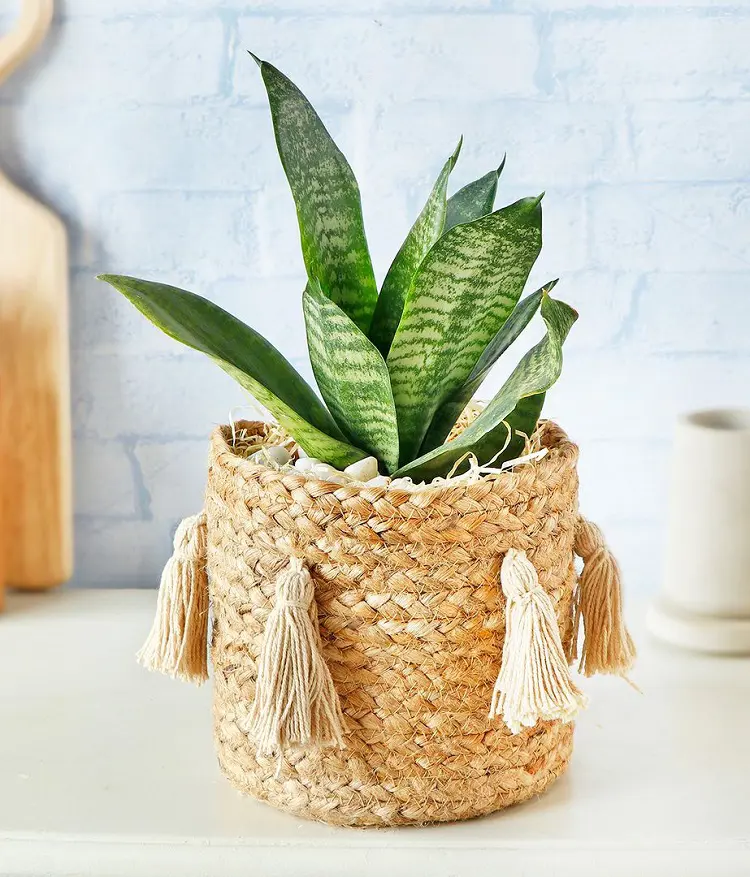
The Snake Plant is also known as Mother-in-Law's Tongue. This plant releases oxygen at night and is excellent for purifying indoor air by removing pollutants, including carbon dioxide. It's a tough plant that can survive different light conditions and is resistant to drought.
Water the Snake Plant only when the soil is dry, about every 3-4 weeks in warmer months. However, it's toxic to pets due to a substance called saponins, so households with cats or dogs should choose a different plant.
- Name: Snake Plant (Sansevieria trifasciata)
- Light: Low to bright indirect light
- Water: Allow soil to dry out between watering; water sparingly
- Mature size: Up to 4 feet tall
11. Gerbera Daisy
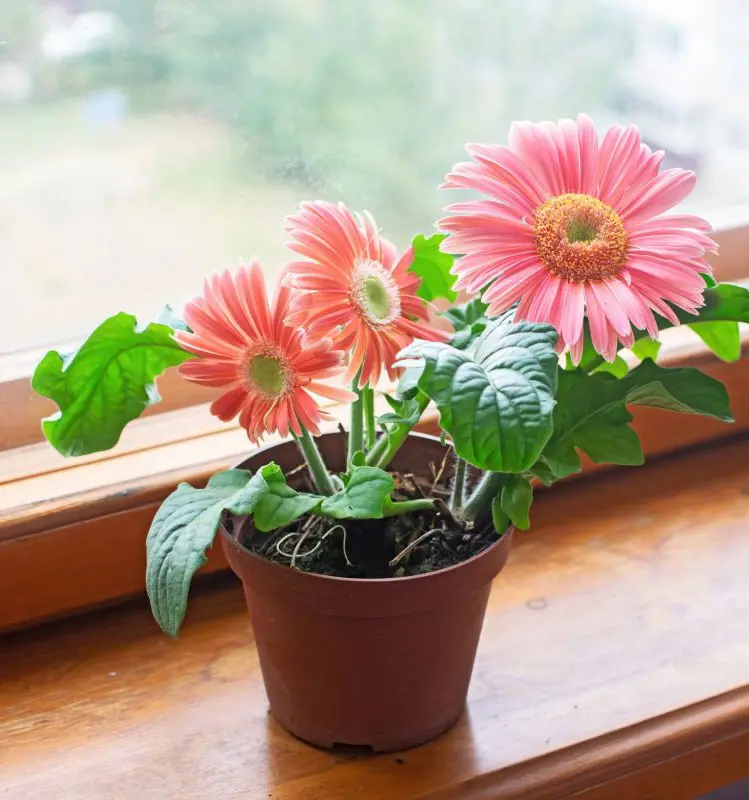
The Gerbera Daisy is a top air-purifying plant, according to a 1989 study by NASA. Within 24 hours, it significantly cleans the air, removing half of formaldehyde, 67% benzene, and 35% trichloroethylene.
For best growth, put it in a spot with moderate sunlight; too much direct sunlight may harm the leaves. Water regularly, but wait until the soil is an inch or two dry before watering. This beautiful plant not only adds charm but also helps keep your indoor air fresh and clean.
- Name: Gerbera Daisy (Gerbera jamesonii)
- Light: Bright, indirect light
- Water: Keep soil consistently moist
- Mature size: Up to 18 inches tall
12. Philodendron
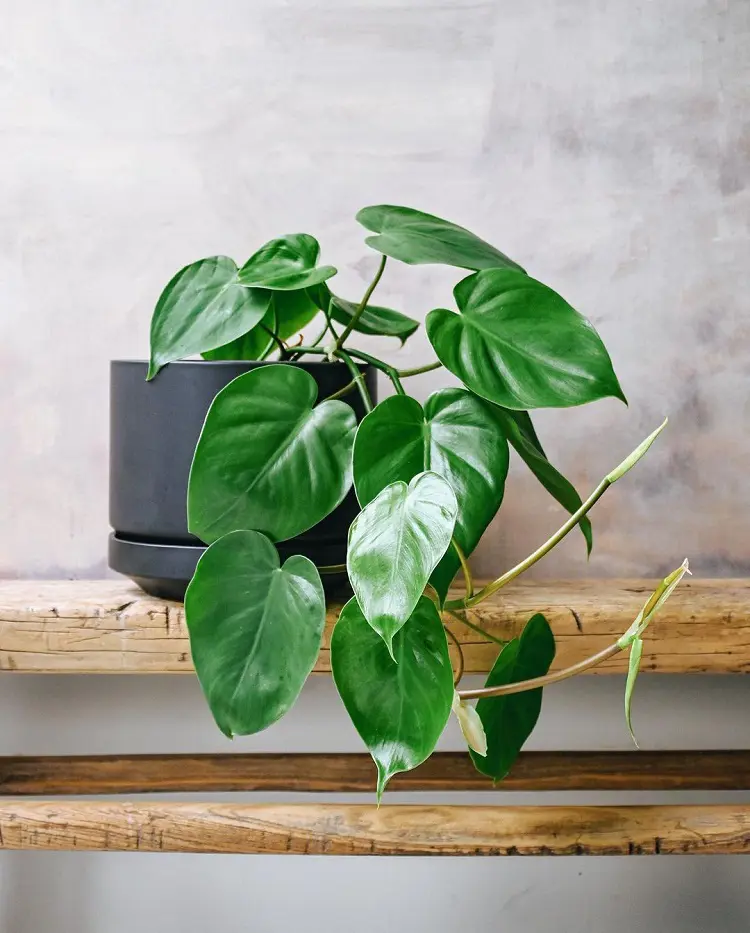
The heartleaf philodendron is a great indoor plant with shiny, heart-shaped leaves. You can hang them in baskets or let them climb on trellis. They thrive in medium, indirect light and need watering every 1-2 weeks.
Let the soil dry between waterings and adjust the frequency with light changes. However, it's important to note that the plant is toxic to both humans and pets. Despite this, its unique appearance makes it a lovely choice for those without these concerns.
- Name: Philodendron (Philodendron spp.)
- Light: Medium to bright indirect light
- Water: Allow the top inch of soil to dry before watering
- Mature size: Varies by species, but can range from a few feet to over 10 feet
13. Rubber Plant
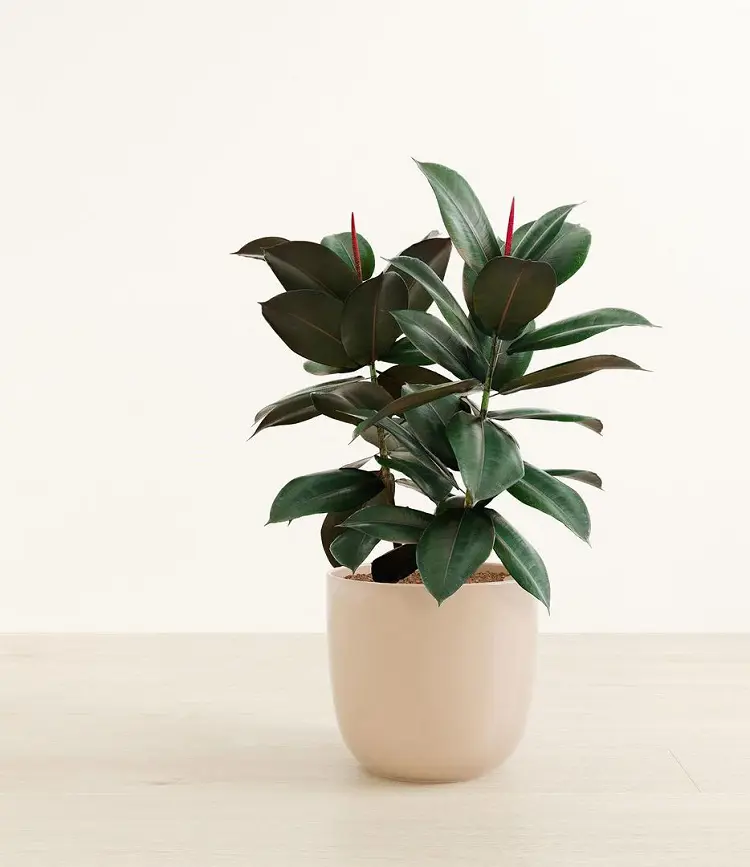
Used for making rubber, the rubber plant is excellent at cleaning the air by removing formaldehyde. The plant also produces oxygen and gets rid of bacteria and mold spores. It's a great addition to your air-purifying plants.
This easy-to-care rubber plant likes medium to bright indirect light. Water it every 1-2 weeks, letting the soil dry between waterings. Keep it away from very cold temperatures as it doesn't like it below 60 degrees.
- Name: Rubber Plant (Ficus elastica)
- Light: Medium to bright indirect light
- Water: Allow the top inch of soil to dry before watering
- Mature size: Can reach up to 8 feet tall
14. Flamingo Lily
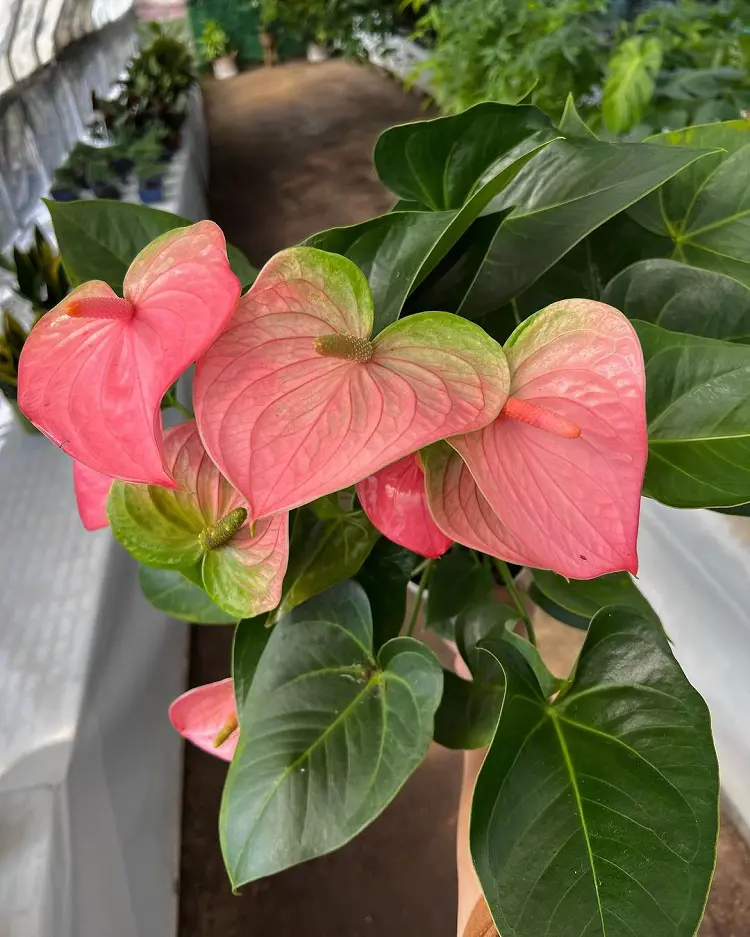
The flamingo lily is a vibrant and air-cleaning plant, but it's a bit tricky to care for. It's pretty and can filter out stuff like formaldehyde and ammonia from the air. Originally from Central and South America, it likes warmth and humidity, so keep it in a place that's over 70 degrees.
Put the lily in bright, indirect light because direct sunlight can hurt its leaves. Allow the soil to slightly dry between watering. Be cautious as it's toxic to people and pets, so avoid having it around if you have kids or animals.
- Name: Flamingo Lily (Anthurium andraeanum)
- Light: Medium to bright indirect light
- Water: Keep soil consistently moist
- Mature size: Up to 18 inches tall
15. Fittonia
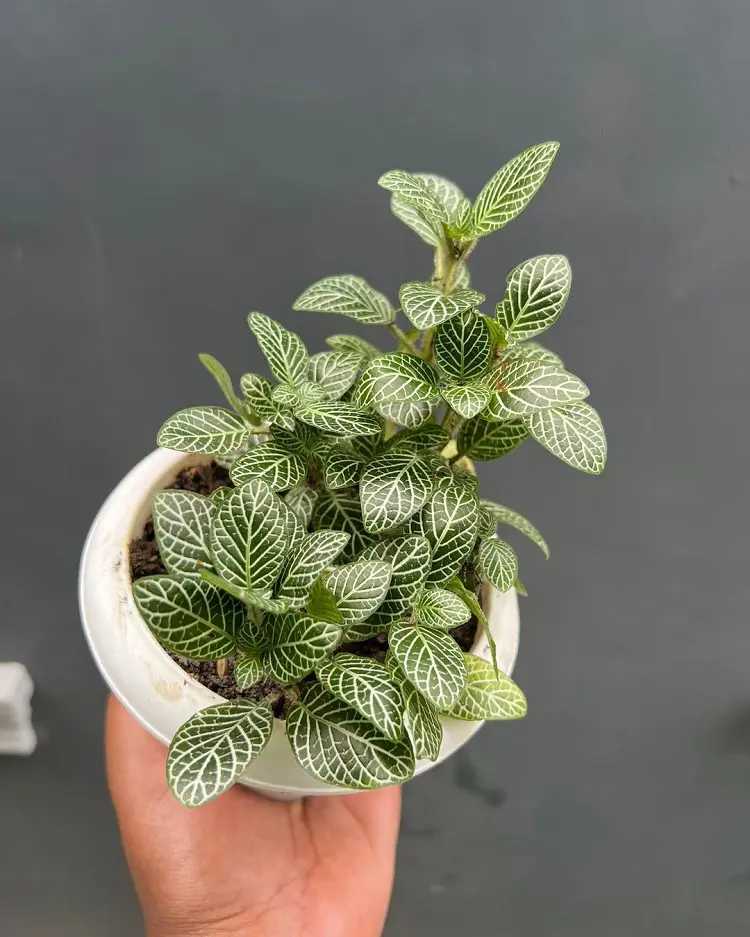
Also known as the nerve or mosaic plant, Fittonia is a popular air-purifying houseplant with lush, patterned leaves. It not only looks beautiful but also cleans the air by removing benzene, toluene, and trichloroethylene.
Fittonia can be a bit finicky compared to other plants. It craves high humidity, making it suitable for bathrooms or terrariums. Bright, indirect sunlight is best, and it needs frequent watering. Ensure the pot has good drainage to avoid water standing, which can lead to yellow and limp leaves.
- Name: Fittonia (Fittonia spp.)
- Light: Medium to bright indirect light
- Water: Keep soil consistently moist
- Mature size: Typically around 6 to 12 inches tall
16. Chinese Evergreen
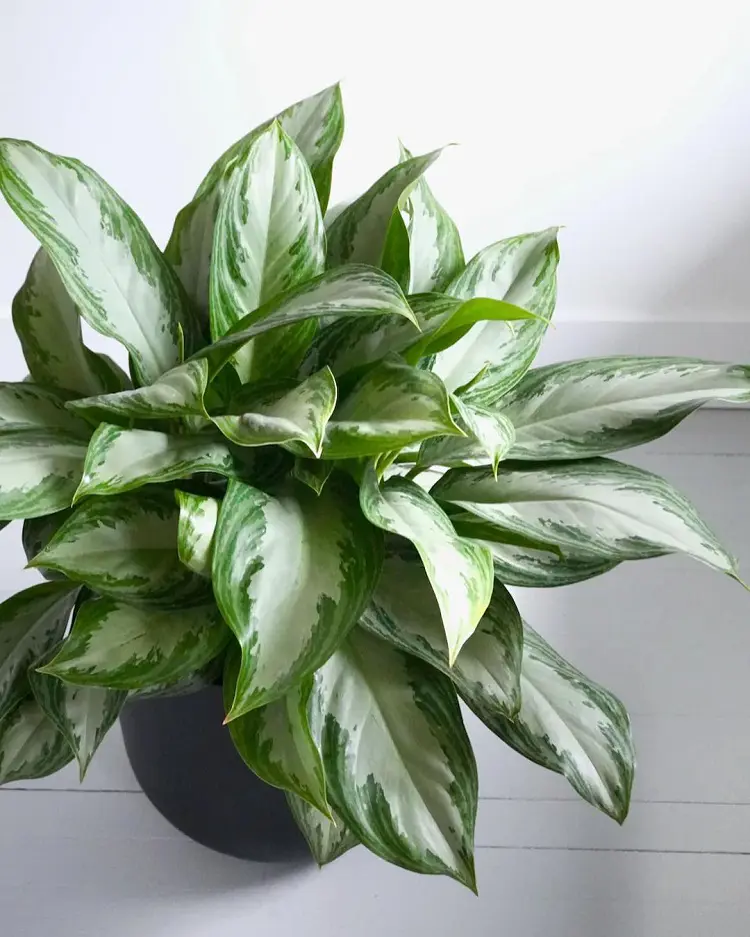
The Chinese Evergreen is known for being super tough and great for beginners who want a clean-air plant. It comes in many colors and can filter out bad stuff like benzene and formaldehyde.
They prefer warmth and humidity. Keep the soil moist, but wait for the top part to dry a bit before watering again. Sadly, this hardy plant isn't safe for pets. So, if you have pets, it might not be the best choice. But if not, it's a fantastic and easy-to-care-for plant for your home.
- Name: Chinese Evergreen (Aglaonema spp.)
- Light: Low to medium indirect light
- Water: Allow the top inch of soil to dry before watering
- Mature size: Can reach up to 3 feet tall
17. Golden Pothos
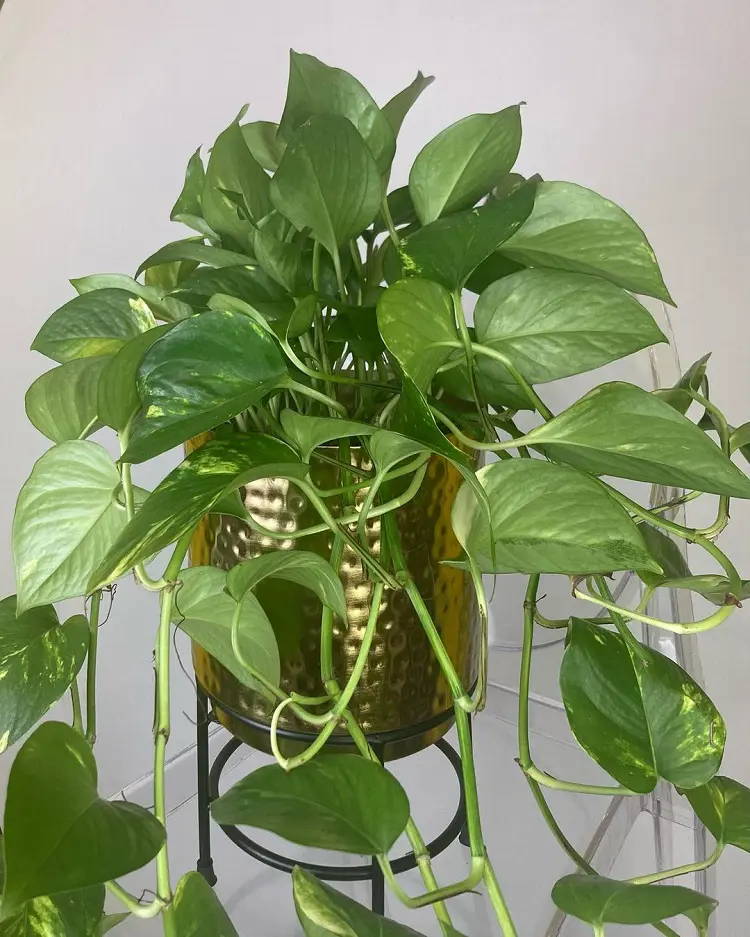
The golden pothos, also known as satin or silk pothos, is a beautiful and low-maintenance vine that's great for purifying indoor air. It filters out harmful toxins like toluene, formaldehyde, xylene, trichloroethylene, and benzene.
This low-maintenance plant does well in moderate to low light and only needs watering every 1-2 weeks, allowing the soil to dry between waterings. Similar to Chinese evergreen, it is also toxic to cats and dogs. You might want to choose a different plant if you are a pet parent.
- Name: Golden Pothos (Epipremnum aureum)
- Light: Low to bright indirect light
- Water: Allow the top inch of soil to dry before watering
- Mature size: Can trail or climb, reaching several feet in length
18. Areca Palm

The areca palm is a large houseplant that can brighten up indoor and outdoor spaces. With its pretty arching fronds, this plant brings a touch of nature indoors.
Water the areca palm enough so the soil stays a bit damp, but don't drown them. They like temperatures between 65 to 75 degrees. So, if you want a low-maintenance friend that adds beauty to your room, the areca palm is a good choice.
- Name: Areca Palm (Dypsis lutescens)
- Light: Bright, indirect light to partial shade
- Water: Keep soil consistently moist, but not waterlogged
- Mature size: Can reach up to 6 to 10 feet tall
19. Scarlet Star Bromeliad
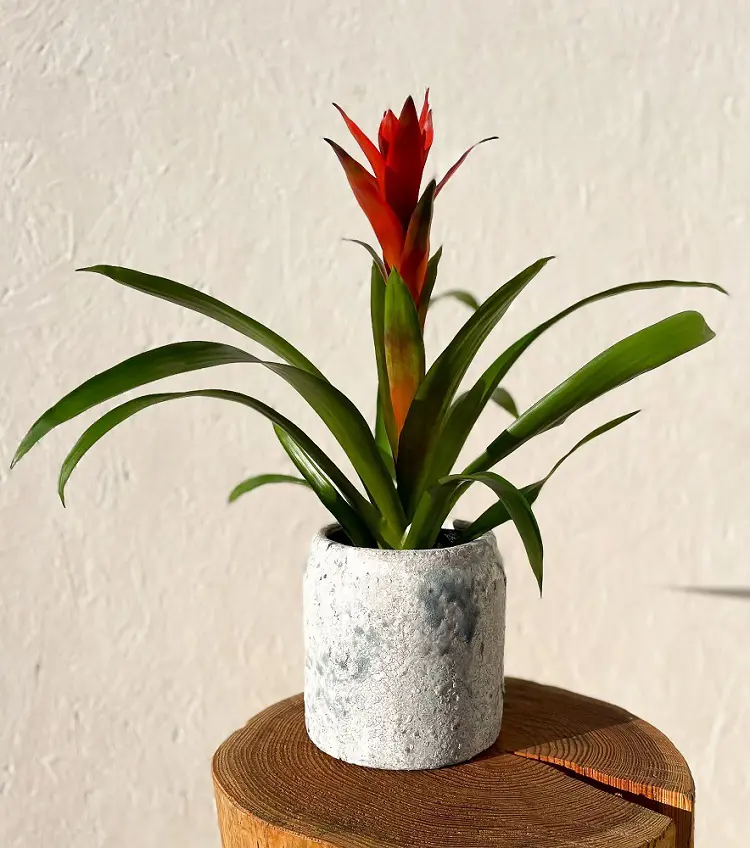
The Scarlet Star Bromeliad is a stunning houseplant with tough, colorful leaves. It's not just pretty; it also freshens up your air. These plants are like humidity lovers, so they feel right at home in your bathroom. Keep them hydrated, but don't let them swim in water.
Put the Bromeliad where there's some light, not too bright though, and definitely not under the blazing sun. This plant is a long-lasting beauty that adds a splash of color and cleans your air.
- Name: Scarlet Star Bromeliad (Guzmania lingulata)
- Light: Bright, indirect light
- Water: Keep the central cup filled with water; mist the leaves occasionally
- Mature size: Up to 18 inches tall
20. Clivia
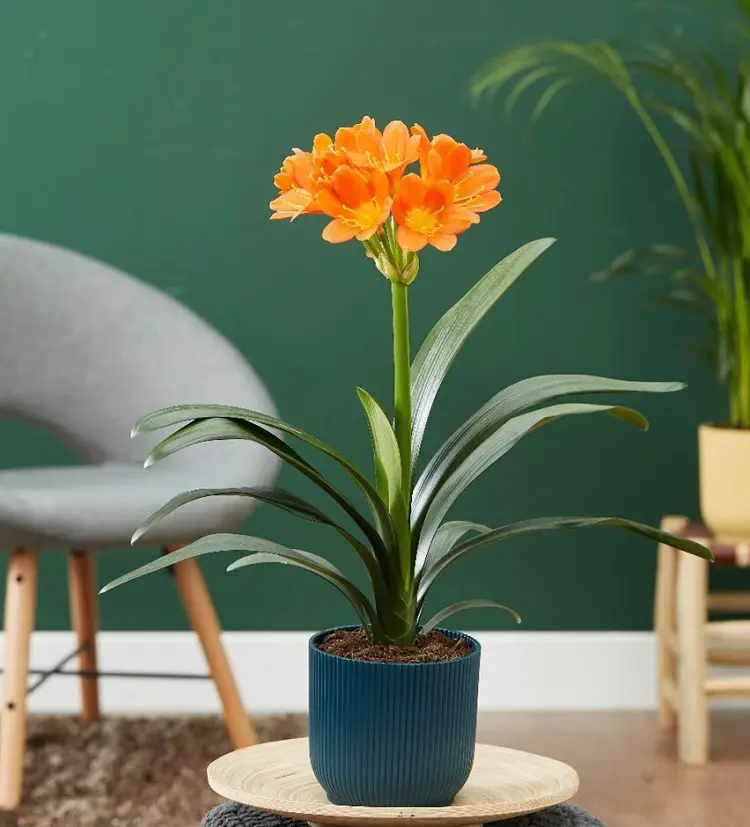
Clivia houseplant's strong, dark green leaves look beautiful, and they can handle a bit of neglect like champs. These plants not only clean the air but also surprise you with bright orange flowers that are amazing to look at.
Clivias like light, but not too much. Keep them in a bright spot, but not under super hot sun or close to heat. So, if you want a tough and beautiful plant buddy that blooms in vibrant orange, Clivia is your go-to plant.
- Name: Clivia (Clivia spp.)
- Light: Low to bright indirect light
- Water: Allow the top inch of soil to dry before watering
- Mature size: Can reach up to 2 feet tall
Recent posts
Gardening
Gardening
How To Grow Grass From Seed? Planting And Caring Guide
Growing grass seems like an easy task. But the ones who are already into it know how much work and patience is required for its maintenance, to transform the outdoor space into a lush, green oasis. For beginners who are starting from scratch or someo...
Gardening
How To Grow, Plant And Care Milkweed From Seed
Planting milkweed from seed is one of the most satisfactory practices. It not only adds value to your garden aesthetics but also contributes essential instinct pollinators, including monarch butterflies. Many milkweed seeds germinate best when expos...
Gardening
18 Rose Colors And Their Meanings
Roses are not only elegant flowers but they also represent something more profound. Every color of a rose has its special meaning, making it a powerful tool when it comes to conveying messages in personal relationships and occasions. Ranging fr...
Gardening
When To Plant Vegetables – A Month By Month Calendar
Understanding when to plant vegetables is essential to successful gardening as timing alone can greatly affect the productivity and health of vegetables. A month-by-month planting calendar is useful because not every month is ideal for a specific pro...
Gardening
How To Prune Hydrangeas So That It Stays Healthy
The name hydrangea conjures clusters of flowers packed densely. Hydrangeas can grow in both old and old wood, and depending on the varieties, pruning time may differ. Pruning hydrangeas is a fundamental practice for gardeners wanting to maintain thei...
Gardening
How To Prune Roses With These 10 Steps
Pruning these thorn-filled plants might seem scary, but it's crucial for having abundant rose blooms. Cutting back old growth encourages new, vibrant growth, removes dead parts, and shapes the plant. This practice also reduces the risk of fungal dise...

